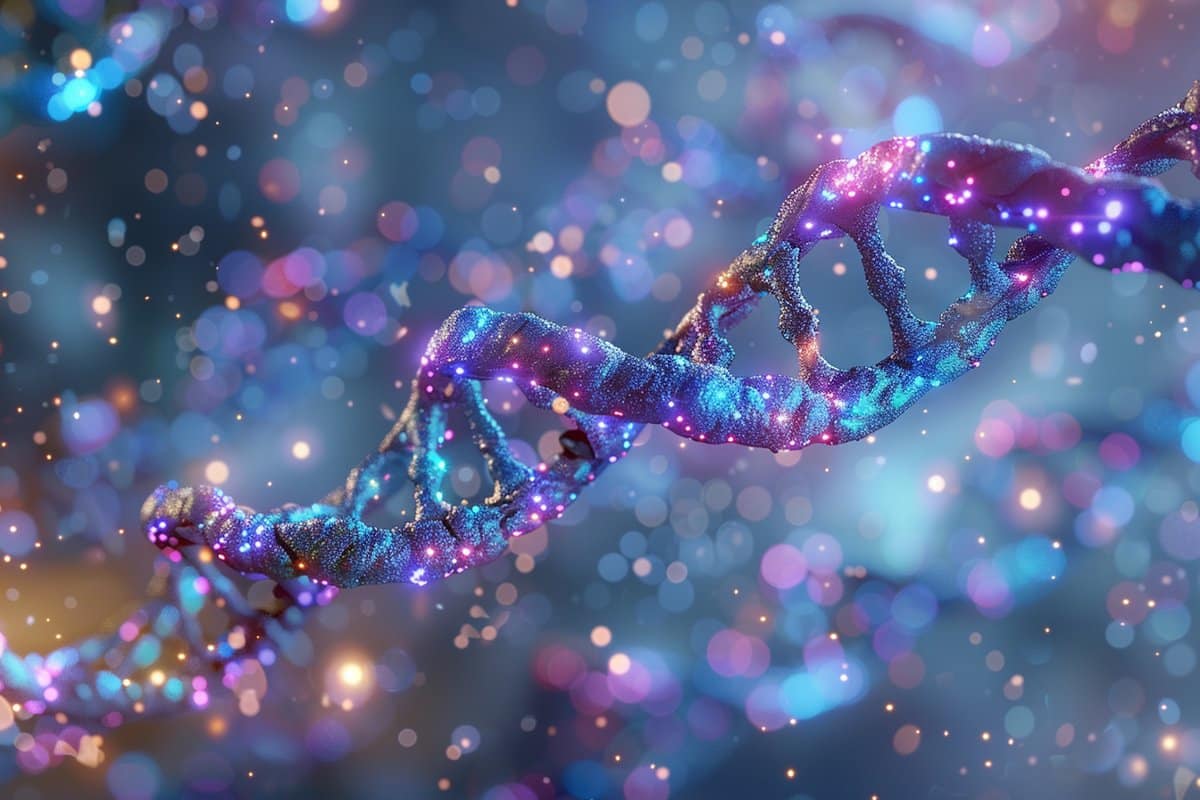Summary: A new study reveals how genetic variants in the SCN2A gene influence the severity and type of neurological impairments, including epilepsy and autism. This study analyzed the function of sodium channels affected by SCN2A mutations, revealing a spectrum of effects from hyperactivity to inactivity.
The findings indicate that the type of channel activity correlates with the age of seizure onset and the overall severity of related impairments. This research paves the way for more targeted clinical trials and personalized treatments for patients with SCN2A-related conditions.
Key Facts:
- Spectrum of Channel Activity: SCN2A variants can cause sodium channels to be hyperactive, leading to seizures in the first week of life, or completely inactive, typically associated with non-seizure neurodevelopmental disorders.
- Correlation with Disease Severity: The severity of neurological impairments is directly related to the type of channel activity, with more severe impairments linked to earlier seizure onset and hyperactive channels.
- Impact on Clinical Trials: This study emphasizes the need for precision medicine in treating SCN2A-related disorders, suggesting that treatments must be tailored to the specific channel activity to avoid potential harm.
Source: Northwestern University
A genetic change or variant in a gene called SCN2A is a known cause of infantile seizures, autism spectrum disorder and intellectual disability, as well as a wide range of other moderate-to-profound impairments in mobility, communication, eating and vision.
The severity of these disorders can vary widely from person to person, but little is known about what is happening at the level of the SCN2A protein to cause these differences.
A new Northwestern Medicine study helps explain how changes in the SCN2A gene affect whether or not a child will develop autism or epilepsy, the age at which seizures start for those with epilepsy and the severity of the child’s other impairments.
The study was published April 24 in Brain, a top neurology journal.
These findings will help better identify patients who are most appropriate for clinical trials of new precisions therapies, including those targeting the SCN2A gene itself.
Analyzing sodium channels
The study represents a collaboration between an academic laboratory at Northwestern and the FamilieSCN2A Foundation, a parent-led rare disease advocacy group.
The SCN2A Clinical Trials Readiness Study (SCN2A-CTRS) recruited 81 families from around the world and collected detailed clinical data and information to identify their SCN2A variants. The median age was 5.4 years. The youngest age participant was 1 month old and the oldest was 29 years old.
The Northwestern team extensively analyzed the functional effects of each SCN2A variant on the sodium channels — tiny gates in the membranes of nerve cells that control the flow of sodium ions into the cell and help neurons in the brain fire properly. Variants in the SCN2A gene alter how the sodium channel functions.
Depending on the individual variant, the channel may be hyperactive (sodium ions flowing more freely) or completely inactive (the channel not working at all). There are variants that make the channel work in ways that are more complex.
The study found a spectrum of effects of the SCN2A variants on sodium channel function from hyperactive channels to completely inactive channels. Importantly, the clinical condition of the child varied with the functional impact on the channel. Hyperactive channels were generally associated with seizure onset in the first week of life.
More impaired channel function was more common when the age of seizure onset was older. In fact, almost all of those without seizures had completely inactive sodium channels.
The severity of other disease-related features also followed this gradient with those most severely impaired (unable to walk, communicate, eat, use their hands), having the youngest age at seizure onset and hyperactive channels.
As age at seizures-onset increased and channels became less active, severe neurological impairments in the child tended to be less severe.
“We previously knew that genetic changes in the SCN2A gene were associated with seizures beginning as early as the newborn period and up through the first few years of life,” said co-corresponding author Dr. Alfred George, chair of pharmacology at Northwestern University Feinberg School of Medicine. “We had an overly simplistic understanding of these associations.
“Our new study clarifies the relationship between the functional consequences of SCN2A mutations, the primary phenotype (autism versus epilepsy and age at seizure onset in those with epilepsy) and the overall severity of the child’s impairments (mobility, etc.).”
Findings challenge prevalent understanding
There is a prevalent understanding among scientists that early-onset seizures are associated only with hyperactive sodium channels and underactive or inactive channels are associated with autism, George said.
However, it’s more complicated, and children with early onset — in the first three months but after the immediate newborn period — don’t have hyperactive channels.
“This is important because new precision medicines that are best suited for hyperactive SCN2A variants could be harmful to those with underactive or inactive variants,” George said.
“Relying only on the age of seizure onset as a criterion for clinical trial enrollment risks inclusion of inappropriate patients.”
Dr. Anne Berg, adjunct professor of neurology at Feinberg, lead investigator of the SCN2A-CTRS and the co-corresponding study author emphasized that, “in the era of precision medicine for rare genetic diseases, this collaboration between a family foundation and a large NIH-funded project is an exemplar of the new partnerships that are needed and increasingly being developed to provide rapid answers to critical questions and lay foundation for successful drug development for severe neurodevelopmental disorders such as those associated with SCN2A.”
The CTRS was driven by the patient community stakeholders and represents precisely the kind of efforts encouraged by the recent U.S. Food and Drug Administration Patient-Focused Drug Development Guidance program, which itself was in response to a mandate from the 21st Century Cures Act, Berg said.
Christopher Thompson, research assistant professor of pharmacology at Feinberg, is a co-first author of the study.
About this genetics and neurology research news
Author: Kristin Samuelson
Source: Northwestern University
Contact: Kristin Samuelson – Northwestern University
Image: The image is credited to Neuroscience News
Original Research: Open access.
“Expanded clinical phenotype spectrum correlates with variant function in SCN2A-related disorders” by Alfred George et al. Brain
Abstract
Expanded clinical phenotype spectrum correlates with variant function in SCN2A-related disorders
SCN2A-related disorders secondary to altered function in the voltage-gated sodium channel NaV1.2 are rare with clinically heterogeneous expressions that include epilepsy, autism, and multiple severe to profound impairments and other conditions.
To advance understanding of the clinical phenotypes and their relation to channel function, 81 patients (36, 44% female, median age 5.4 years) with 69 unique SCN2A variants were systematically phenotyped and their NaV1.2 channel function systematically assessed. Participants were recruited through the FamileSCN2A Foundation.
Primary phenotype (epilepsy of neonatal-onset, N=27; infant onset, N=18; and later onset N=24; and autism without seizures, (N=12) was strongly correlated with a non-seizure severity index (p=0.002), which was based on presence of severe impairments in gross motor, fine motor, communication abilities, gastrostomy tube dependence, and diagnosis of cortical visual impairment and scoliosis.
Non-seizure severity was greatest in the neonatal-onset group and least in the autism group (p=0.002). Children with the lowest severity indices were still severely impaired, as reflected by an average Vineland adaptive behavior composite score of 49.5 (>3 SD below the test’s norm-referenced mean).
Epileptic spasms were significantly more common in infant onset (67%) than in neonatal (22%) or later-onset (29%) epilepsy (p=0.007). Primary phenotype also strongly correlated with variant function (p<0.0001); gain of function and mixed function variants predominated in neonatal-onset epilepsy, shifting to moderate loss of function in infant-onset epilepsy, and severe and complete loss of function in later-onset epilepsy and autism groups.
Exploratory cluster analysis identified five groups representing (1) primarily later-onset epilepsy with moderate loss of function variants and low severity indices, (2) mostly infant-onset epilepsy with moderate loss of function variants but higher severity indices, (3) late-onset and autism only with the lowest severity indices (mostly 0) and severe/complete loss of function variants.
Two exclusively neonatal clusters were distinguished from each other largely on non-seizure severity scores and secondarily on variant function.
The relation between primary phenotype and variant function emphasizes the role of developmental factors in the differential clinical expression of SCN2A variants based on their effects on NaV1.2 channel function. The non-seizure severity of SCN2A disorders depends on a combination of the age at seizure onset (primary phenotype) and variant function.
As precision therapies for SCN2A-related disorders advance toward clinical trials, knowledge of the relationship between variant function and clinical disease expression will be valuable for identifying appropriate patients for these trials and in selecting efficient clinical outcomes.

Rachel Carter is a health and wellness expert dedicated to helping readers lead healthier lives. With a background in nutrition, she offers evidence-based advice on fitness, nutrition, and mental well-being.






